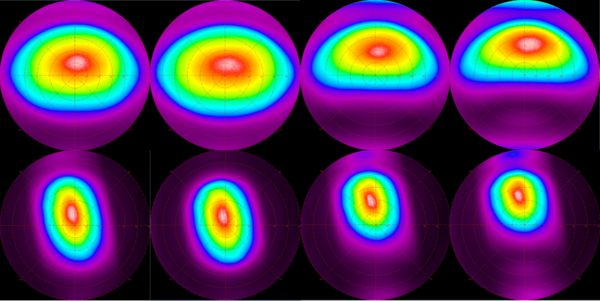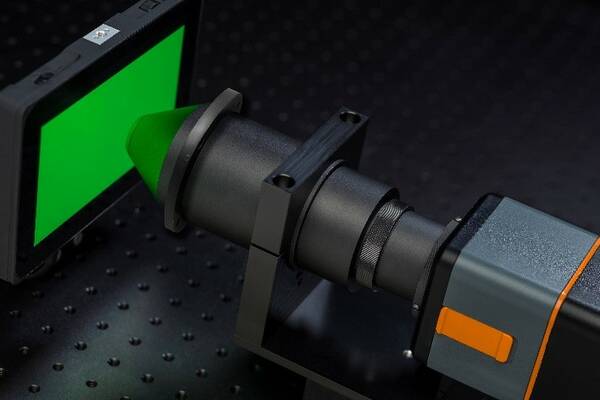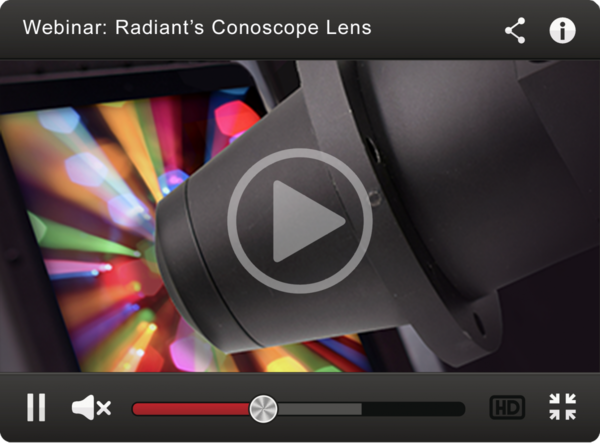A New Angle on Display Measurement
You’re in the driver’s seat of your car, glancing at the map on your GPS display to navigate the journey. Meanwhile, your spouse is in the passenger seat, using a display interface in the center console to adjust the temperature and air flow inside the car for everyone’s comfort. And your kids are strapped in the back seat, heads bent together over a shared tablet that’s playing the latest Pixar video release to keep them entertained on the drive.

Everyone is looking at display screens, and everyone is looking at them from different angles. How can display designers and manufacturers ensure that display visibility is consistent from each different viewer position for safety, usability, and a positive user experience?
A conoscope lens enables precise measurement and evaluation of color, luminance, and contrast as perceived from different view angles. Radiant recently released its second-generation FPD Conoscope Lens, which takes high-resolution photopic measurements of the angular light emitted from flat panel displays and display components, enabling comprehensive view angle performance evaluation. The lens uses Fourier optics that map an emitting spot to the measurement system’s image sensor so that each pixel corresponds to a different emission angle. In a single measurement image, this process captures the display as it could be seen at every angle (pictured in the polar plots below for display colors W, R, G, and B).

Software images of angular measurement plots for a consumer electronics display device, measured with (bottom) and without (top) a privacy screen.
The FPD Conoscope Lens captures a full cone of view angle data in a single measurement to ±70 degrees. This angular range allows manufacturers to evaluate displays across the common scope of user viewing positions. In addition, the ability to capture all view angle performance data at once provides quick, accurate results, making the system ideal for both R&D projects and in-line production quality control. Regardless of display type, the lens reliably captures luminance and color data for emissions from a range of technologies, including LCD and OLED displays, as well as backlit units.

Ensuring that displays are visible with consistent quality from different angles is important for consumer electronics devices like phones and tablets. However, view angle is particularly critical in the automotive and aerospace industries, where safe operation of a vehicle depends on the operator’s ability to clearly see information on displays that are s integrated in fixed assemblies. Testing for view angle performance in these conditions ensures that everyone can view display information with consistency, regardless of user position or even physical height.
To learn more about the new FPD Conoscope Lens, download the spec sheet or watch a webinar on the following topics:
- Addressing complex view angle challenges such as OLED color consistency and defects in embedded displays
- Reducing the cost and complexity of equipment with a single, compact camera system
- Using the same measurement system from R&D to in-line quality control, with the ability to acquire additional display measurements by switching camera lenses

Watch the Webinar:
Evaluating View Angle Performance Using Radiant’s Conoscope Lens
Note: this webinar presents Radiant’s first-generation Conoscope Lens; product specifications have changed, but the considerations, methods, and performance results presented remain relevant. See the latest Spec Sheet for complete information on the FPD Conoscope Lens.
Join Mailing List
Stay up to date on our latest products, blog content, and events.
Join our Mailing List
